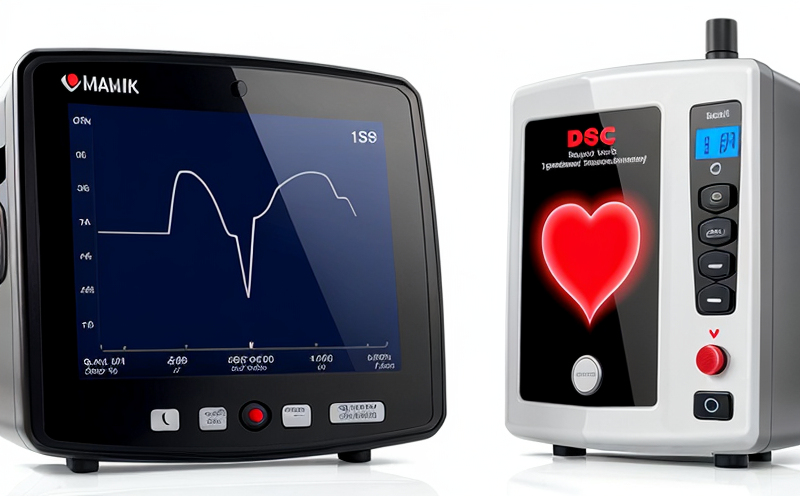ISO 5840 Mechanical Heart Valve Fatigue Testing
The ISO 5840 series of standards is a critical set of guidelines that dictate how mechanical heart valves are tested for fatigue. This testing ensures the safety and reliability of these devices, which are implanted in patients to replace malfunctioning heart valves. The fatigue test aims to simulate the real-world stress conditions that valves must endure over their expected lifespan.
The mechanical heart valve is subjected to a repetitive loading cycle that mimics the pulsatile flow encountered during normal physiological conditions. This testing process is essential because it helps identify any potential weaknesses or design flaws before the devices are implanted in patients. The test parameters include specified stress levels, number of cycles, and environmental conditions.
The specimen preparation for this test involves precise machining to ensure that the valve has a consistent geometry as per ISO 5840 standards. Once prepared, the valves are placed into a fatigue testing machine where they undergo cyclic loading until failure or reaching the specified cycle count.
Failure modes can include cracks forming in the leaflets, wear of the metal components, and other structural defects that could compromise valve integrity. The test results provide critical insights into the durability and reliability of the mechanical heart valve design.
| Test Parameter | Description |
|---|---|
| Stress Levels | The stress applied to the valve during each cycle is typically within a range specified by ISO standards. |
| Cycle Count | The number of loading cycles before failure or reaching the specified count, which varies based on the valve design and intended use. |
| Environmental Conditions | The temperature and humidity levels during testing to simulate real-world conditions. |
- Precision Machining: Ensuring the valve has a consistent geometry as per ISO standards.
- Fatigue Testing Machine: Specialized equipment that applies cyclic loading to the valve.
The test results are meticulously documented and reported in accordance with international standards. This documentation is crucial for regulatory compliance, clinical trials, and ensuring patient safety.
Understanding ISO 5840 fatigue testing is essential for quality managers, compliance officers, R&D engineers, and procurement professionals involved in the development and manufacturing of medical devices. By adhering to these stringent tests, manufacturers can ensure that their products meet or exceed global regulatory requirements.
Eurolab Advantages
At Eurolab, we pride ourselves on offering comprehensive testing services for cardiac and cardiovascular devices. Our state-of-the-art facilities and experienced personnel ensure that every test is conducted with precision and accuracy. Here are some of the key advantages:
- Expertise: Our team consists of highly skilled engineers and scientists who have extensive experience in medical device testing.
- Regulatory Compliance: We follow all relevant international standards, including ISO 5840, to ensure compliance with regulatory requirements.
- Accurate Results: Our advanced instrumentation provides accurate test results that are crucial for product development and quality assurance.
- Fast Turnaround: We understand the importance of timely delivery and strive to provide quick turnaround times without compromising on quality.
We also offer a range of additional services, including design validation, clinical testing, and post-market surveillance. Our commitment to excellence ensures that our clients can rely on us for all their testing needs.
Why Choose This Test
- Ensures Safety: The fatigue test is essential in identifying any potential weaknesses or design flaws before the device is implanted in patients.
- Predicts Durability: By simulating real-world stress conditions, this test helps predict the durability and reliability of the valve over its expected lifespan.
The ISO 5840 fatigue testing is a crucial step in the development and manufacturing process of mechanical heart valves. It ensures that the devices are safe, reliable, and effective for use in patients. This testing is particularly important because it helps identify any potential issues early on, preventing costly recalls and ensuring patient safety.
The test results provide critical insights into the durability and reliability of the valve design. These data are essential for regulatory compliance, clinical trials, and ensuring patient safety. By adhering to these stringent tests, manufacturers can ensure that their products meet or exceed global regulatory requirements.
Use Cases and Application Examples
The ISO 5840 fatigue test is primarily used in the development and quality assurance of mechanical heart valves. Here are some specific use cases:
- New Product Development: Manufacturers can use this test to evaluate new valve designs before they enter clinical trials.
- Regulatory Compliance: Regulatory bodies require manufacturers to conduct fatigue tests as part of the approval process for new medical devices.
| Use Case | Description |
|---|---|
| New Product Development | Evaluating new valve designs before clinical trials. |
| Regulatory Compliance | Conducting fatigue tests as part of the approval process for new medical devices. |
The test is also used in post-market surveillance to monitor the performance of implanted valves over time. This helps identify any potential issues that may arise and ensures ongoing compliance with regulatory standards.
By conducting this fatigue test, manufacturers can ensure that their products are safe, reliable, and effective for use in patients. The test results provide critical insights into the durability and reliability of the valve design, which is essential for regulatory compliance, clinical trials, and ensuring patient safety.





